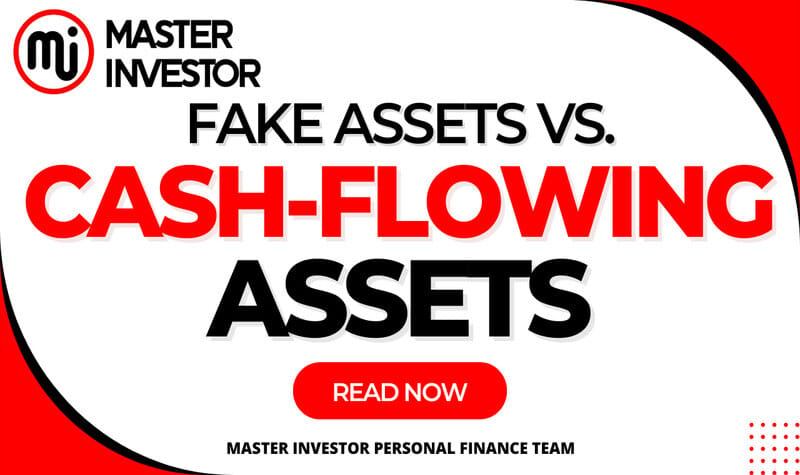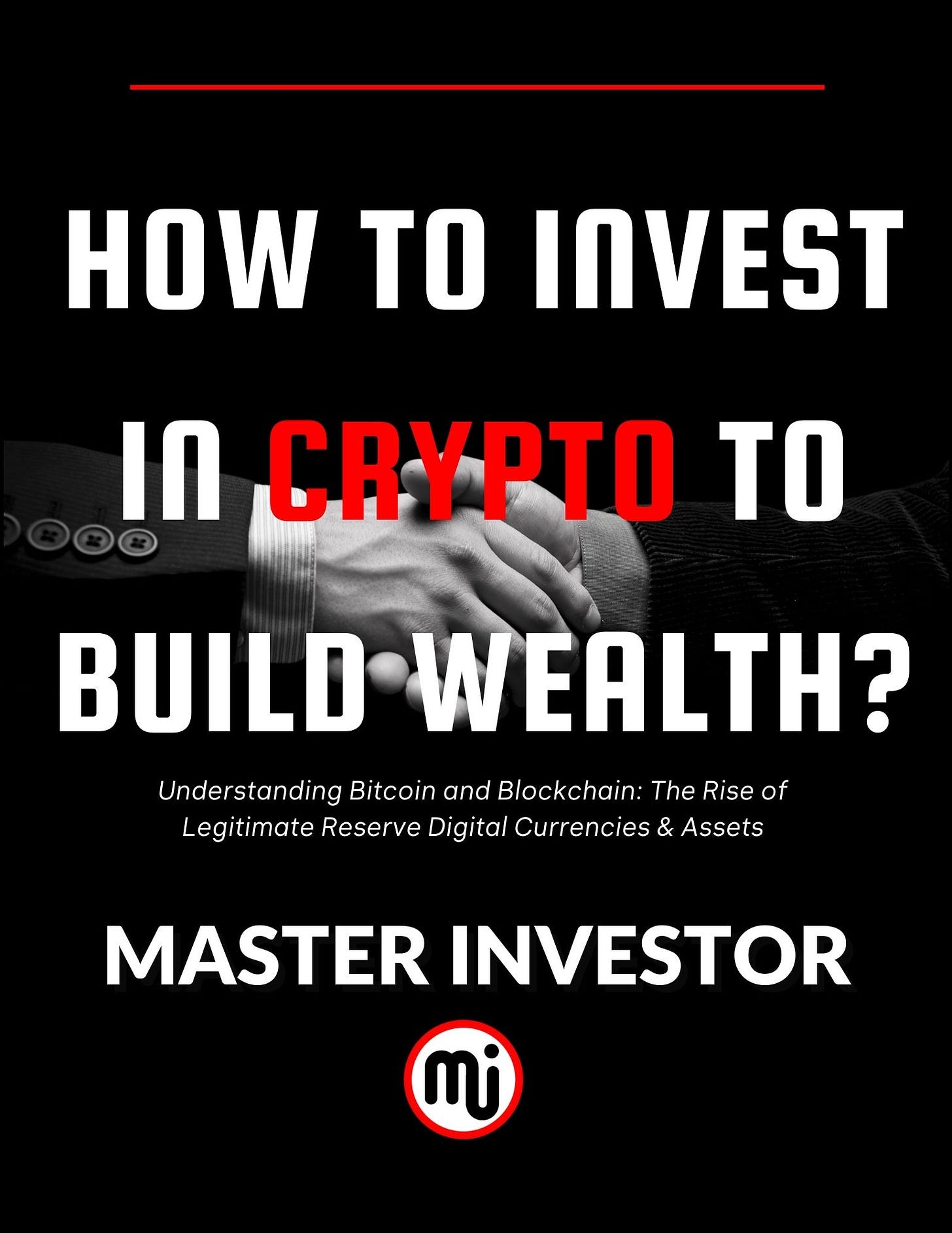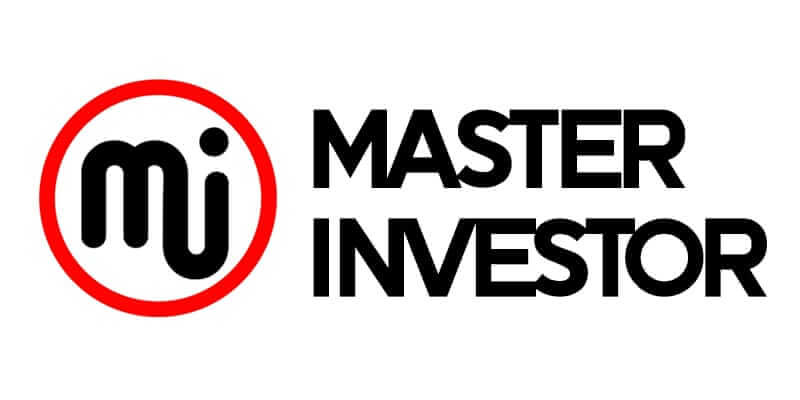
Summary:
Being able to distinguish between an asset and a liability is essential to being wealthy.
Wealthy people own assets that consistently produce cash flow.
To become wealthy, apply our financial knowledge rather than the currency.
Let’s analyze the gap below:
Master Investor’s Newsletter is a reader-supported publication. To receive new posts and support my work, consider becoming a free or paid subscriber.

This graph demonstrates how, in the last almost forty years, the wealthy have gotten much wealthier while the middle class and the poor have gotten dramatically poorer.
How is this possible to occur?
Fake assets hold the key to the solution
False assets: What are they?
The advice that most people get in the world is the following: “Go to a good school, get a good job, save money, buy a house, and invest in a balanced portfolio of stocks, bonds, and mutual funds" that is the customary financial advice offered by people in the past. That plan is definitely not a plan to become wealthy. That is what most people would do unfortunately, missing out on the fast track of life, due to their lack of finical education and financial experience they are afraid of investing. They end up giving their hard earned income to others to invest it for them in fake assets. It's likely that this advice was also given to majority of people in the world, at least 90% of world’s population.
We must always pay attention to people’s behavior regarding money and as an indicator to capitalize on the opportunities that crisis brings to inside investors. In 1971, Nixon removed the dollar from the gold standard. Our money was poisoned after that. It turned into debt.
The wealthy do not work for earned income, came to us after he realized what the government was up to.
We can agree due to the facts that money is poisonous and that it is intended to harm everyone who earned money (people on the left side of the cash flow circle), saved money, or put money into government-sponsored assets like stocks, mutual funds, 401(k)s, and exchange-traded funds (ETFs).
Here at masterinvestor we have giving world access to the wealthy mind’s wisdom. We recorded the following facts in that book. A house that does not put money in our pocket in the form of cash flow and such house does not pay tself off then the house is a liability. But if the house generates cash flow through short term or long term rentals and it puts money in our pocket after all expenses are paid including the debt service. Then, that house is an asset. The same liability someone has in their liabilities column could be a real asset that generates positive cash flow for us.
Those who save are losers in todays’s economy.
Wealthy people don't work for earned income, we do not sell our time for a check.
The purported financial experts let out a cry. This was heresy to them. They said, "We have no idea what we are talking about." Regretfully, we do because we have financial education. And numerous recessions that have destroyed millions of people's wealth attest to this. We recommend all to read: “How To Build Cash-Flow With The internet? Turn Passive Income. A personal finance book, and that will help anyone become a master of money like a capitalist.
Easy formula for assets vs liabilities
An asset puts money in our pocket when we do not work. A liability takes money out of our pocket.
A fake asset is, to put it simply, one that robs us blindly while promising to make us wealthier.
Various types of fake assets include:
A 401(k) is a fake asset since the money disappears from uneducated investor’s wallet over time—years and years. An Individual Retirement Account (IRA) deducts money from the pocket for an extended period of time, making it a fictitious asset.
Because a government pension deducts money from the unwise investor wallet over an extended period of time, it is a fake asset.
A principal dwelling that requires the uneducated investor to pay a mortgage for thirty or more years is a phony asset because we are paying money out of the pocket for it. Taxes and all repairs must be paid for out of the unwise investor’s pocket.
An impostor asset is a mutual fund. Savings, bonds, stocks, and ETFs are all similar. Every one of them is a derivative. Mutual funds are rife with fees, which serve to enrich the wealthy at the expense of the poor. Insiders are aware that investors in mutual funds provide 100% of the capital and assume 100% of the risk, but they only receive less than 20% of the returns.
Recall that assets enable us to generate passive income and capital gains income, which will cover any expenses related to the asset. The uneducated investor has to pay money to cover the liabilities. We can always determine the difference between a real and phony asset by using this easy formula.
The Dow Jones Industrial Average (DJIA) 1895-2015

The increase of the Dow Jones Industrial Average over a 120-year period, from 1895 to 2015, is depicted in that graphic. Recessions are indicated by shaded areas.
You can see that the massive 1929 catastrophe, which plunged the nation into a slump that lasted for more than 20 years, was really a minor blip. A tiny bit of stuff.
In comparison, Black Monday, 1987, which caused global alarm, was merely a little decline. From there, you can observe the DJIA's sharp ascent and the ensuing significant crashes.
The questions to ask are "but how high will it go. And how far will it fall?" even in bull markets.
In actuality, the market's tendency to rise and fall is inherent. Those falls might be larger now than they have ever been.
The poor and middle class may face financial collapse in the event of the next crash. And the false teachers, assets, and money are to blame for it all. As many of those folks as we can save, that's my goal. For one thing, that's why we wrote this article.
The distinction
What separates the extremely wealthy from the typical person is as follows: The very wealthy are aware of the system's tendency toward extreme fluctuations and are skilled at taking advantage of them. The New Rules of Money's play for the super-wealthy and those who have the wealthy mindset context.
We understand that following the traditional advice to go to school, acquire a good job, save money, and invest in a diverse mix of mutual funds, equities, and bonds is a recipe for financial ruin. And so we may amass wealth, we are depending on the average person to continue following the established rules.
What makes fake assets problematic?
As this post's introduction stated, during the previous almost forty years, the middle class and the impoverished have suffered while the wealthiest have gotten significantly wealthier.
The wealthy are becoming extraordinarily wealthy by pilfering the wealth of the middle class and the poor class via the use of fake assets.
That is the issue with counterfeit assets. It's also expanding. Let's take a brief look at history first.
The Employee Retirement Income Security Act, which safeguarded workers' corporate pensions, came into force in 1974. Another financially structured retirement plan, the 401(k), began to take shape four years later.
Something was wrong with this. All of a sudden, people who had never invested—men and women alike—with no background in finance were expected to do so. That marked the beginning of a gigantic financial scam involving Wall Street, the US government, and "too big to fail" banks.
An entire business of "financial planners," who are really professional marketers educated to sell paper assets like stocks, bonds, and mutual funds for commission, was born out of the 401(k) institution. These are not investments, to be clear.
These are goods that Wall Street, the US government, and banks hope to sell in order to make large profits. They achieve this by charging fees and by increasing sales of their products. We are on to something if that seems to us like a Ponzi scam.
However, as we can see, the wealthy are getting wealthier while the middle class and the poor are going poorer, despite a burgeoning industry of financial advisors, soaring stock markets, and millions of individuals investing in products like 401Ks and IRAs.
That is the issue with fake assets.
The US Dollar's Impending Collapse
If we have read our other books, The 10 New Rules of Money, and How to Invest in Crypto to Build Wealth? then we are aware that although many people still view the dollar as money, it is actually a form of currency (it is created with debt) because Nixon removed it from the gold standard. This is the cause of the numerous extreme fluctuations in the economy over the past forty years. But it is music to the one that has financial education and aversely invest in real assets.
The dollar can no longer be seen as an asset that provides investors with a safe haven during uncertain times.
Like any other asset class, it is subject to the volatile fluctuations of the market due to its status as a currency. The dollar's value against the Euro has fluctuated significantly in 2022 alone, going from $1.51 to its most recent low of $1.23. The dollar is transferable, meaning that market whims can cause it to appreciate or depreciate dramatically in value. As a result, its value fluctuates constantly.
US deficit spending
The government spent $1.38 trillion more in 2022 than it took in.
This seems crazy to the typical individual. It's common knowledge that when we consistently spend more than we make, creditors will eventually knock on our door and people won't trust us when we tell them we will pay them back.
Investors now claim they don't think the United States can repay its debt. They are eschewing the dollar for this reason.
US foreign debt
As of 2023, Japan leads the list of foreign creditors with $1.1 trillion, while the United States owes China about $859.4 billion. These figures suggest that, contrary to what the average person may have previously believed, we are far more dependent on China's growing economic might worldwide. The US is the world's largest debtor nation, with the majority of our debt owed to a nation that has consistently and loudly criticized the dollar. The currency would totally collapse if China decided to pursue collection of its debt.
Another reason why investors are moving away from the dollar is this.
Existing on a borrowed time
History will always repeat itself until certain patterns are altered. Many economists predict that the US will see significant deflation akin to that of the US and hyperinflation akin to that of Germany. That is to say, if current trends continue, we will see both kinds of depressions. In the end, the dollar will inevitably become worthless even though it might strengthen temporarily.
All currencies eventually go to zero, as the proverb says.
In the annals of time, no currency has escaped the crushing weight of debt that its governments have piled upon it. The dollar won't be an anomaly. It is only a matter of time, and it might happen sooner rather than later.
Majority of people are living on borrowed time if the person is a dollar bettor.
It is not safe to invest in dollars. All those dollars that the Fed has been pumping into the economy will eventually swamp the market and generate massive inflation, once the crisis has temporarily subsided. Years and years of money depreciating will probably cause the middle class to collapse. The last thing we want to be holding when that occurs is cash.
What Is Safe, Then?
With all of this, one must wonder, what else is safe if not the dollar?
Cash-flowing assets is the succinct response.
The basic investment philosophies of wealthy people are common. We invest in a variety of assets, including companies, real estate, oil wells, and more, that generate positive cash flow and act as a hedge against inflation.
We also maintain our liquid assets in silver and gold rather than currencies. This is so because when the dollar declines, gold and silver appreciate.
Not everyone who lacks financial literacy should use this. A high degree of financial literacy is required for this type of investing. It is up to us to determine where our safe haven is.

What we are capable of?
The wealthy do not labor for pay or invest in fake assets. Instead, we are aware of the game's rules now that debt equals money. Our acumen and understanding of finance enable them to make meaningful investments that increase our wealth and put money in our pockets every month.
The first step in breaking free from the never-ending cycle of handing over our money to the wealthy via fake assets is financial education. To invest in actual assets that generate income flow, we need to become more financially literate and comprehend the following:
The way to use taxes to buy property.
How to use loans to buy property.
Ways to reinvested profits without incurring taxes.
The rationale behind preserving gold and silver rather than counterfeit money.
By learning more about finance, we too will be able to invest like the wealthy and recognize phony assets with ease. Moreover, make expert investments on actual assets.
Greetings from the world of Fake vs Real
Many now refer to the reality in which we live as "post-truth." To put it succinctly, our reality is a fabrication.
The phrase "fake news" gained popularity as a result of former President Donald Trump criticizing the media for a range of actual or alleged reporting problems. Many users on social media have phony followers. Billions of dollars are spent by millions of people purchasing phony Versace, Louis Vuitton, and Rolex watches. Fake pharmaceutical medications also exist.
There are innocuous fakes out there. More power to them if they choose to wear a bogus luxury watch. Other counterfeit goods have the capacity to seriously hurt both the globe and us.
Verifying what is true and what is phony in today's society can make all the difference in terms of life and death, wealth and financial disaster, and war and peace.
Let’s look at three concrete examples of harmful fakes: fake assets, false professors, and fake money.
1- False currency
False money has the ability to worsen the lives of the poor and middle class while also making the wealthiest wealthier.
We go into great depth in the book about how the elites and Grunch print bogus money, starting with Nixon's removal of the dollar from the gold standard and what it implies for us. Let's just state that fake money is the exact reason why savers are losers in today's environment.
2- False mentors
What financial lessons did we learn in school? The majority of people say that nothing applies. The majority of educators are wonderful individuals. However, our educational system is flawed, out of date, and does not adequately prepare pupils for life after school.
Our educational system is putting millions of young people in financial darkness and the worst kind of debt—student loan debt—rather than pointing them in the direction of prosperity.
The largest asset of the US government is its $1.6 trillion in student loan debt. In the world of crime, this is referred to as extortion.
Even worse, these instructors spread harmful and untrue information about the virtues of saving money, investing in a well-balanced portfolio of stocks, bonds, and mutual funds, owning a home, and attending a reputable institution. All false financial realities.
Following graduation, entire industries of brokers, advisors, and gurus promote these false financial realities and amass wealth in the process.
3- Fake Assets
To begin with, we must clarify and comprehend the distinction between an asset and a liability. Assets enable us to have excess of positive cash flow (passive income) and capital gains income. Also assets allows us to minimize taxes all the way to zero legally in many instances. We have to pay money out of pocket for liabilities.
Majority of people who gets a home, they think because their house may be going up in value, they think it is their biggest asset, poor and middle class tend to follow in this context. A financial educated person would that a house is not an asset—it's a liability if it requires the owner to pay for it with his or her hard earned income, and it does not make them any positive cash flow. Millions of individuals consider their home to be a valuable possession but it is not unless with do something with it by moving the excess of cash flow or capital gains into a new cash flowing asset.
The housing market crashed in 2008. In many locations throughout the world, property prices are just now beginning to rebound, with the exception of a select handful like San Francisco, New York, and Honolulu, where prices have increased.
On the other hand, the real estate crash was not one. The identical fictitious assets that Brill details in his piece were the root of the problem.
To thrive in this world fill with fake assets, we must be financially literate.
In our content here at masterinvestor we constant discuss the original reason we started masterinvestor’s company: Not only to actively invest but to create the global brand of money, business, and investing. To provide actionable steps with high quality financial education to the world, to educate people about money so they may prosper in any market environment.
According to an old proverb, "Knowledge is power." With our content here, we want to arm us with the information we need to stand up to the forces that be, discern between what is real and what isn't, and prosper when so many others are fighting just to survive. Today knowledge is money but knowledge is only achieve when we have experience by applying the information learnt into our lives. Make sure that the whatever we are consuming is top notch and align with our goals. We must also become producers in this world of fake assets. Master how to build and acquire cash flowing assets. Usually, real assets have the potential to become long lasting brand and not just a commodity.
This impending depression will be the largest wealth transfer in history, as we have often stated. This is our chance to get wealthy fast. But we have to give up using the outdated money rules.
Don't lose sight during a moment when we could feel hopeless and panicked. The strategically positioned will encounter adversity with acknowledgment and discover possibilities and promise. Hold our heads high. Keep learning everything we can. A chance is pounding on our door. Are we going to respond?
Start investing in high quality financial education, by reading our financial eBooks:



Lucrative resources and tools:
Follow us on Instagram.
Listen to our Podcast.
Subscribe to our Newsletter.
Follow us on Tiktok.
Purchase a business digital Course.
Like our Facebook Page.
Join our Inner Circle.
I am reading: Fake Assets vs. Cash-Flowing Assets
Comment, like, share and follow for more High Quality Financial Education Made Simple.

